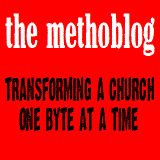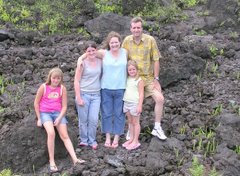Fighting Cholera
I have been hearing reports of a cholera epidemic in Obala, which is 45 km north of Yaounde. In fact, it appears to be centered in one particular quarter (neighborhood) of the town, where Sion UMC is located. Right down the street from the church lives Pastor Simeon Nomo, his wife and two children.
When I spoke to Pastor Nomo, he confirmed that people were dying from cholera, so yesterday morning, Leah and I made a quick trip to investigate. We visited the government-run Obala Hospital, and sat down to speak with the consulting physician, Dr. Joseph Essama. He confirmed that there was cholera in the community, though he downplayed its seriousness. According to him, there were only 26 confirmed cases, and to date, only six deaths.
I fear that he may be purposely undercutting the numbers, in order to keep the public from panicking. But there is another Catholic-run hospital in the area, and some patients may have gone there. Also, there is always the possibility that the poorest residents may avoid the hospital altogether, since they don’t have enough money to pay for care.
Pastor Nomo believes the number of fatalities is much higher, also. He personally knows one household in his neighborhood where five people died.
I asked Dr. Essama what he needed in order to keep the epidemic from raging out-of-control. He explained that most of the people in the town get their drinking water from wells; this is where the disease has come from. Each well must be treated as soon as possible. At a cost of only 40 cents apiece, a simple well-treatment kit consisting of chlorine, sand, and a small bag can be distributed to homes and installed by young men.
To this point, households in only four of 18 quarters in Obala have had well treatments; the hospital has run out of money for treatment kits and manpower.
The hospital itself seems to have a grip on cholera treatment; Cameroon’s Minister of Health recently visited and restocked the hospital with medications. Those who arrive early enough, upon the first symptoms of the disease, are likely to recover.
Besides treating the water source, the other major challenge seems to be simple education. So on our way back to Pastor Nomo’s house, Leah hit upon a simple idea – hosting a Cholera Prevention Sunday at the church! I had been planning to preach in Obala this Sunday anyway; now we have decided to have a special event after the service in the church sanctuary.
We are busy putting together 300 cholera prevention kits. Each one will include one bar of soap, a small bottle of bleach, bottled water, and sheets of information about cholera prevention. Each kit will be wrapped in a simple plastic sack and handed out in the church to members of the church and nearby residents.
I am currently trying to find some special funds to help pay for the well-treatments and cholera prevention kits. Pastor Nomo is greatly relieved that the Mission has taken an interest in the problem.
As we were driving through the main street of Obala, Pastor Nomo told us to look out for people wearing black ribbons around their ankles. He told us that this was the approved remedy for cholera … according to witchdoctors.
I asked him, “So is anybody in your church wearing black ribbons on their ankles?”
He laughed and said, “Oh no! I told them not to wear them at all!”
Way to go, Pastor!


